Learning how to cook with the dutch oven over the campfire will change the way you cook while camping.
Before we started cooking with our dutch oven, cooking was one of the most stressful things, especially when you’re cooking for a crowd. We brought small burners for cooking, but really, trying to cook a full meal on small burners was quite the right solution for us as a family.
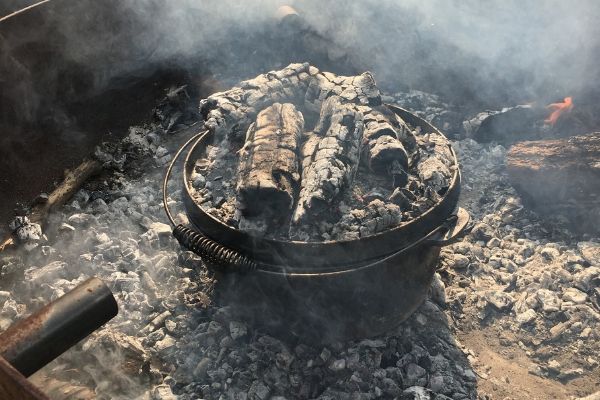
Then one year I was gifted a cast iron dutch oven, with legs to stand in the fire. That dutch oven has the ability to hold charcoals on top of the lid, and it changes our camping cooking for good.
What is a dutch oven?
A dutch oven is much like a pot, but it’s very heavy, usually made of cast iron. It has a tight-fitting lid (or it should) that helps keep the heat and steam inside the oven while cooking. Dutch ovens can be used in a conventional oven or as in our case, over a campfire.
This is a guide for cooking in your dutch oven over the campfire, and therefore I will only talk about cast iron dutch ovens. There are different versions of dutch ovens that you can use in a conventional oven, those include clay dutch ovens and some are made from aluminum.
Dutch oven’s are very for versatile cooking on the campfire. You can use the Dutch oven as you would use a crock-pot at home. You can use the Dutch oven to bake bread – like we do in this crispy bread recipe. Your dutch oven can be used to make anything really. Using the bottom of the pan or turning the lid upside you can fry something in your dutch oven. The list goes on and on.
How to get started with dutch oven cooking
Once you get your hands on a dutch oven, you need to do a few things before you can cook with it for the first time. If it is brand new and from the store, there should be instructions with the dutch oven on how to get it ready for cooking with it.
The Importance of Proper Dutch Oven Seasoning
Seasoning your Dutch oven is essential to ensure non-stick cooking and to prevent rust, especially in the outdoors where moisture can be an issue. A well-seasoned cast iron oven also imparts a rich flavor to your dishes over time. Before your first outdoor cooking session, make sure to properly season your Dutch oven by giveing it a generous layer of edible oil and heat the dutch oven in a conventional oven, at full power for about 30 minutes. This will allow the dutch oven to soak up all of the oil and leaves the surface easy to use. Repeat when needed. This process creates a protective coating that not only enhances your cooking experience but also helps preserve your Dutch oven for years to come. Always follow the instructions from the company that made the dutch oven.
If you can’t find any instructions here are some things to remember:
- A dutch oven should always be cleaned in water and nothing else. When you use it and clean it a hard sponge will scrub off anything that would be left in the pan.
- After EVERY use, you should add a layer of oil to the pan. This protects the steel and makes it easy to cook with.
- You should always dry off excess oil – oil can spoil and ruin the experience of using the dutch oven.
How to Choose the Right Dutch Oven for Your Needs
When shopping for a Dutch oven, consider factors like size, weight, and whether you’ll use it exclusively outdoors or also at home. For campfire cooking, a 12-inch Dutch oven with a flat lid and sturdy legs is ideal, allowing it to sit securely over coals. If you’re car camping or cooking for a large group, a larger model might be preferable. Make sure to choose a cast iron version for better heat retention, although aluminum versions are available for those who prefer lighter gear.
Best dutch oven cooking tips
While I am crazy about dutch oven cooking, there are a few things that I have picked up to be helpful along the way:
Choose the right recipe to start
Am I all for the great videos about fancy cooking, and the great producers at Tasty make it look easy. And while dutch oven cooking doesn’t have to be hard, I would choose a simple recipe to start with and build from there. Choose recipes your family would enjoy. Our dutch oven pulled pork recipe or our crusty bread recipe would be good places to practice.
Mind the temperature
You can cook with regular firewood or charcoals when you cook in your dutch oven. When you start out, I would recommend cooking with charcoals.
It’s easier to control the temperature with charcoals. Add a piece of charcoal or remove a piece, is easier than it is to control the removal of firewood if you are just starting out.
Depending on the wood, the wood will burn at different temperatures and for different lengths of time.
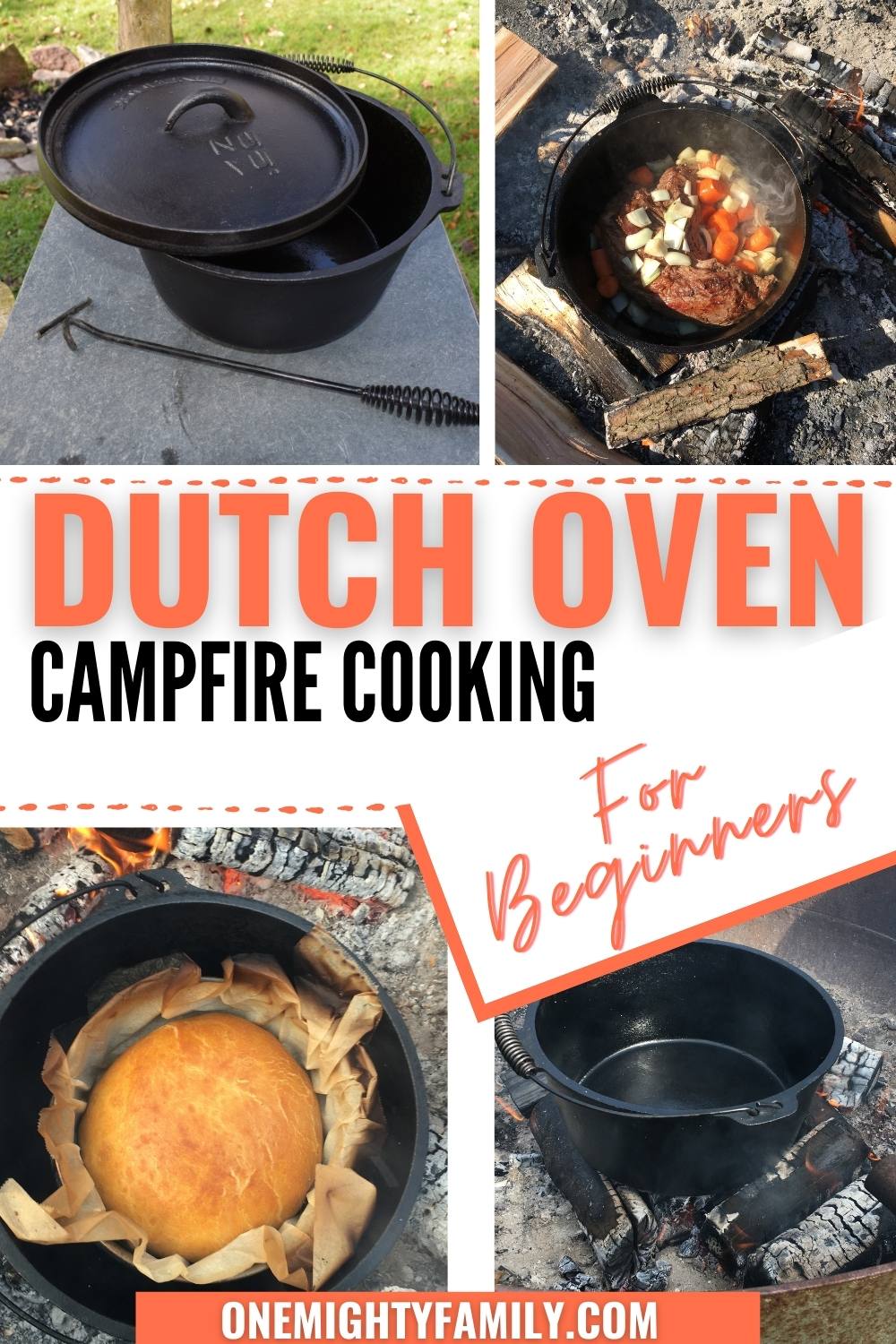
Mastering Heat Control with Briquettes or Coals
One of the biggest challenges for beginners is learning to manage heat while cooking outdoors. The secret to successful Dutch oven cooking lies in controlling the number of briquettes or coals you use. As a rule of thumb, for a standard 12-inch Dutch oven, use about 24 briquettes—12 on top and 12 beneath the oven. This distributes heat evenly and ensures that your food cooks through without burning. To adjust cooking temperature, simply add or remove coals. For higher heat, place more coals on top; for baking, reduce the bottom heat.
Dutch Oven Safety Tips for Campfire Cooking
Safety should always be your top priority when cooking outdoors with a Dutch oven. Cast iron gets incredibly hot, so always use heat-resistant gloves and tools designed for handling cast iron cookware. When cooking over an open fire, make sure the area around your campfire is clear of flammable materials, and never leave your Dutch oven unattended while it’s in use. It’s also wise to have a bucket of water or sand nearby to extinguish any unexpected flare-ups.
Choose the right spot for cooking with your dutch oven
Make sure you have a place where it’s safe to cook with your dutch oven. You need to make sure that you place the dutch oven in a place where it will not catch fire. We always cook in our campfire pit, but there are people that cook on camp tables, such as this one from amazon. That will give you a more comfortable cooking height, and is definitely something I would invest in if I was going on trips where weight wasn’t an issue.
Have the right equipment
When we first got our dutch oven we made do with the equipment we have. But there are a few things that make it easier to cook.
A good dutch oven
For cooking with a dutch oven over a campfire, you do best with a good, sturdy cast iron dutch oven. I like to have one with legs underneath so that it’s steady while cooking. This one from Lodge can be found on Amazon. Remember to adjust the size to the needs of your family.
A good hook
A good hook that can lift the lid for you while you cook with your dutch oven. Look where you buy your dutch oven, because often when you buy your dutch oven you will get a hook as well. If it is not included, you need to look for something like this lid-lifter from Lodge.
BBQ starter
Charcoal starter, or a bbq starter. If you are cooking with charcoals and don’t want to start a campfire, this is essential for you to do
Heat resilient gloves
Having gloves that will make it easier to take the dutch oven off the fire, without burning your hands. No matter what you cook you will need to look at it and make sure it’s not too warm/cold. Sometimes it’s easier to do this if you have your dutch oven away from the fire.
A good long spoon
To stir a pot is one thing but stirring a dutch oven, over a fire that is sometimes hard to get to – is different. I love having a good long spoon that can reach all the way around the dutch oven, without me burning my hands.
TIP: Make sure that all of the utensils you use in your dutch oven are made from wood or if you don’t have that, non-flamable materials. Plastic and silicone utensils will melt if you use them over the fire.
Coal Tonges
When handeling the dutch oven sometimes it is good to also be able to move the heat. A good set of coal tongs allows you to move briquettes without a hassle.
A trivet
If you’re planning to bake bread or dessert, consider a trivet to elevate your food, preventing burning from direct heat at the bottom of the oven. This is an extra that is really convenient. In the past I have made due with a very salty dough that i have made just for this purpose.
Easy Dutch Oven Recipes for Beginners
If you’re just getting started with Dutch oven cooking, try some simple one-pot recipes to build your confidence. Dishes like chili, stews, and casseroles are perfect for beginners because they require minimal heat control and can simmer slowly over a bed of coals. As you gain experience, you can move on to more complex meals like baked goods, pot roasts, and layered dishes. Dutch oven cooking is all about experimentation, so don’t be afraid to try new things!
Safety Tips for Outdoor Dutch Oven Cooking
Cooking with a Dutch oven outdoors can be incredibly rewarding, but safety must always come first when handling cast iron and managing open flames. Cast iron Dutch ovens retain a lot of heat, which makes them excellent for outdoor cooking but also potentially dangerous if handled improperly. Always use heat-resistant gloves or mitts specifically designed for cast iron cookware, as these ovens can reach extremely high temperatures. When lifting the lid or moving the oven, a sturdy lid lifter or long-handled tongs are essential to avoid burns. Additionally, never place a hot Dutch oven directly on a surface that isn’t heatproof; use a trivet or set the oven on a bed of coals to prevent accidents.
Fire Safety: Managing Your Campfire or Heat Source
When using a campfire or charcoal briquettes as your heat source, proper fire safety is crucial. Ensure that your fire pit or campfire area is free of any flammable materials like dry leaves, grass, or low-hanging branches. If you’re in a designated camping area, use the established fire rings or grills whenever possible. Keep a bucket of water, sand, or a fire extinguisher nearby to extinguish any unexpected flare-ups quickly. It’s also a good idea to use a thermometer to monitor the heat of your Dutch oven, as fluctuating temperatures can lead to accidents. Once you’re done cooking, make sure to completely extinguish your campfire by dousing it with water and stirring the ashes until they’re cold to the touch.
Best Practices for Cooking with Coals or an Open Flame
When cooking with coals or over an open flame, controlling heat is key not only to successful meals but also to safe cooking. Spread your coals evenly to prevent any hot spots that might cause food to burn or lead to dangerous flare-ups. A good rule of thumb is to place most of the coals on top of the lid rather than directly under the oven to avoid excessive bottom heat that can char food. Additionally, avoid piling too many coals too closely together, as this can create an uneven cooking environment and increase the risk of burns. Rotating both the Dutch oven and the lid every 15-20 minutes can help distribute heat evenly, preventing accidents and ensuring a perfectly cooked meal.
Environmental Considerations: Cooking Responsibly in Nature
As outdoor enthusiasts, it’s important to respect the environment while enjoying Dutch oven cooking in nature. Always follow Leave No Trace principles by choosing sustainable firewood or using charcoal briquettes responsibly. Avoid cutting down live trees for firewood, and be mindful of local regulations regarding open fires or coal use, particularly in areas prone to wildfires. After cooking, properly dispose of any ash by scattering it over a large area or packing it out if required. Additionally, take care not to disturb wildlife and ensure that all food waste is packed away securely to prevent attracting animals to your campsite. Cooking outdoors is about more than just creating delicious meals; it’s about preserving the beauty of nature for future generations to enjoy.
How to maintain your dutch oven.
Once you have used your dutch oven for cooking your meal, you need to rinse it out and prepare it for next time.
When it is cooled down so that you can handle it, clean it properly. For cast iron dutch ovens, I like to scrub them with a steel brush and hot water. Once it’s clean, I dry it off completely. When it is dry, I rub it with a natural tasting oil, both on the outside and on the inside. This maintains the great surface of the dutch oven. Make sure to dry off the excess oil with a paper towel.
How to Properly Store Your Dutch Oven Between Uses
Once you’re done cooking, it’s important to properly clean and store your Dutch oven to keep it in great condition. Avoid using soap, as it can strip the seasoning. Instead, scrub the oven with hot water and a stiff brush. Once it’s clean, dry it thoroughly and apply a light coat of oil to prevent rust. Store your Dutch oven with the lid slightly ajar to allow air circulation, which helps prevent moisture buildup inside the oven.
Common questions about dutch oven cooking
Can I use a dutch oven on a campfire?
Yes, you can. If you choose a dutch oven with legs, you can place it straight into the fire, in your campfire. As explained above, it can be hard to control the temperature when you cook with just firewood. If you are a beginner at cooking over a fire, consider using some charcoals along with the firewood from your campfire.
Can I place a dutch oven directly into or next to a campfire?
If you buy a cast iron dutch oven made to use while camping, you can place it right in the flames of your campfire, yes. You can also place it right next to your campfire to have lower heat.
You do have to be aware of what you are cooking and how warm you want the dutch oven to be. I like to turn it around when I cook to make sure that I distribute the heat evenly.
How do I make bread in a dutch oven when camping?
Making bread while camping is one of our favorite things to do. It’s a brilliant way to raise the quality of the meal and to be honest we just love the slow cooking adventure of bread over a campfire. We usually use our bread roll recipe and then bake it slowly over the campfire. You can read our full guide to baking in a dutch oven here.
Why is my food cooking unevenly in my dutch oven?
If your food is cooking unevenly, try rotating the oven every 15 minutes to distribute heat more evenly. Burnt food is often a result of too much heat on the bottom, so consider reducing the number of coals beneath the oven. If food is sticking, it might be time to re-season your Dutch oven. And remember, patience is key: Dutch oven cooking is often slow, but the flavors are worth the wait!
Happy cooking – please send me a picture or tag me on social media – I would love to see how you are doing with your own outdoor dutch oven cooking experience!
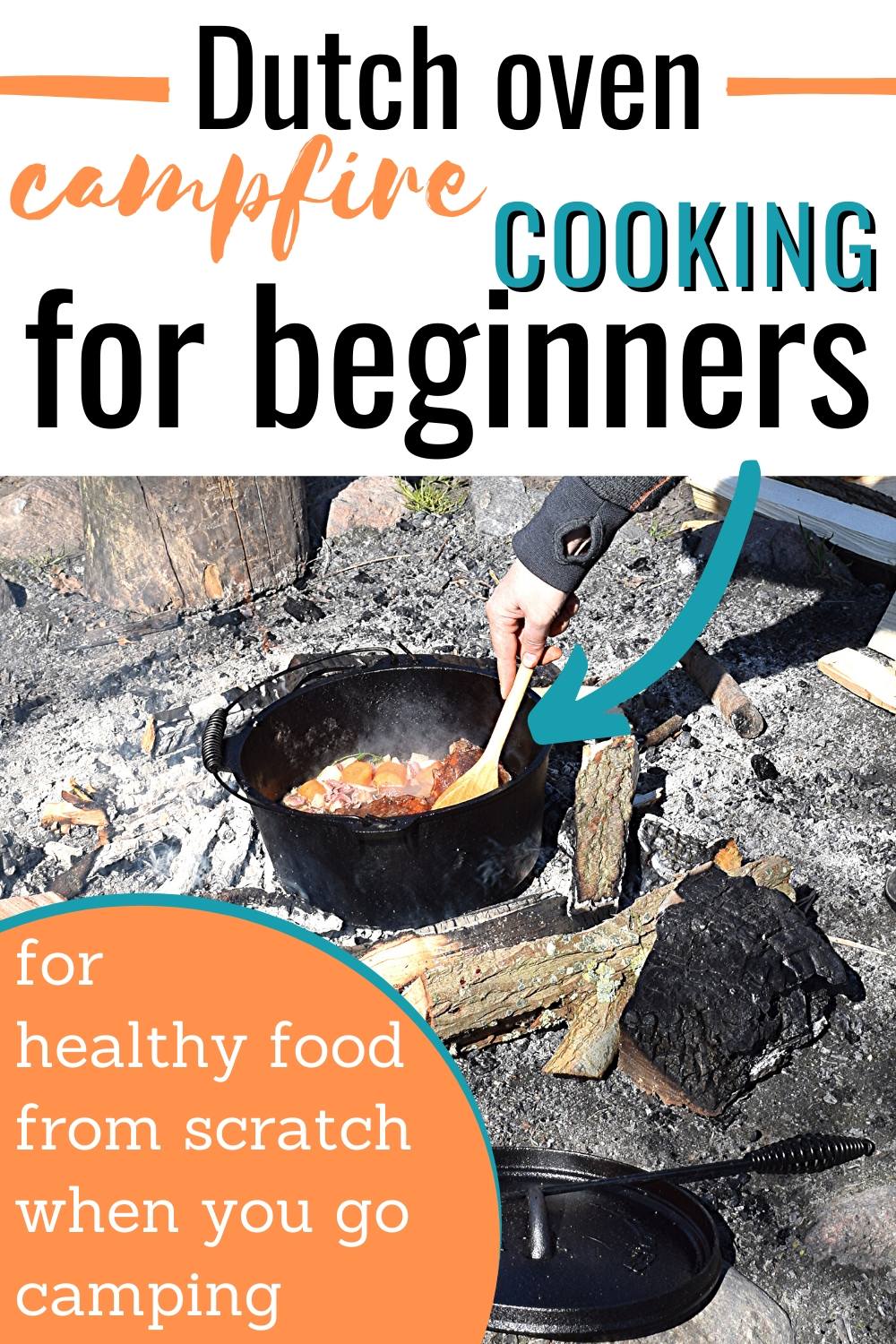

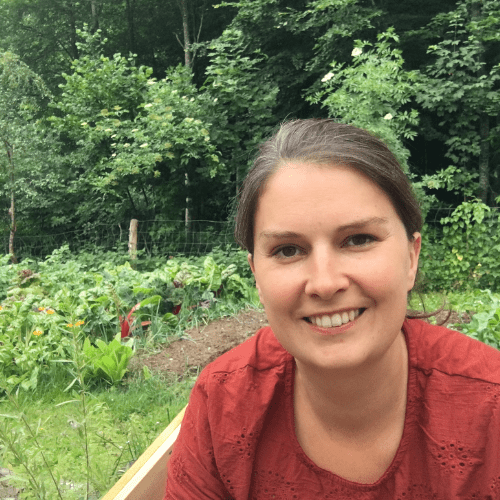
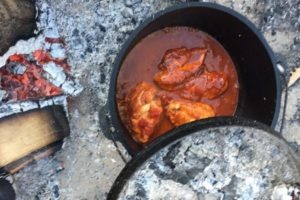
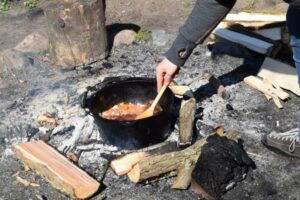

Minor typo, “recilliant” -> “resilient”
Thank you, Much appreciated (And I may have gotten that word wrong, but the feeling is true 🙂 ) Have the best day.